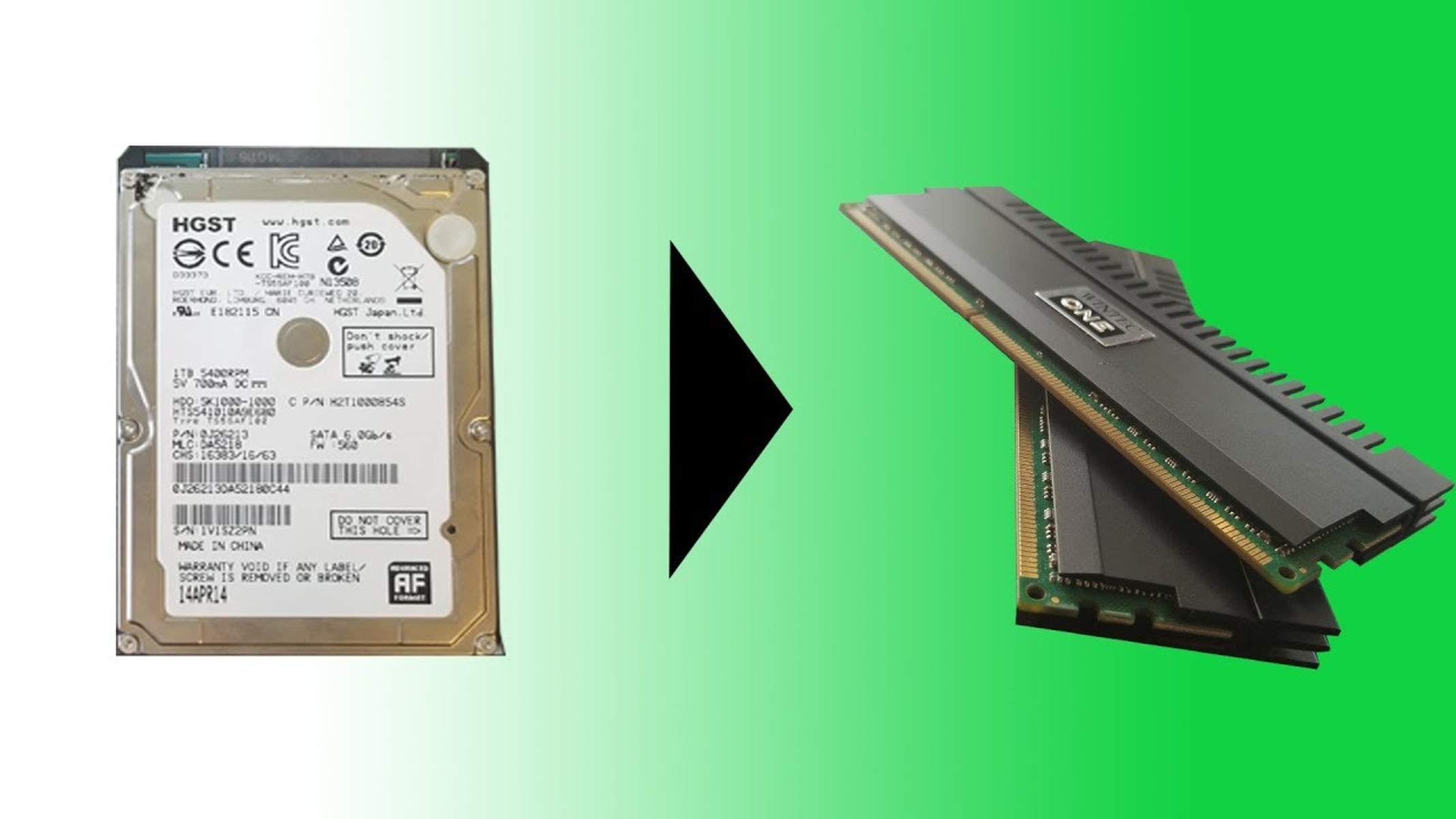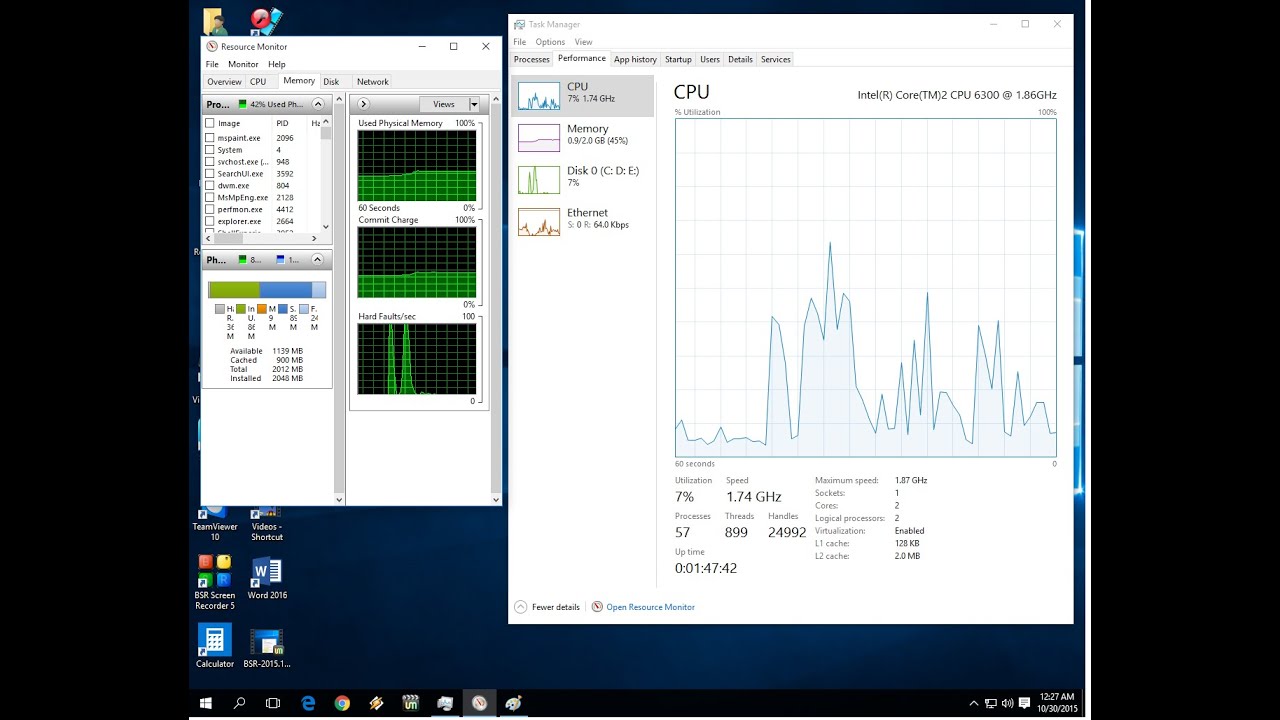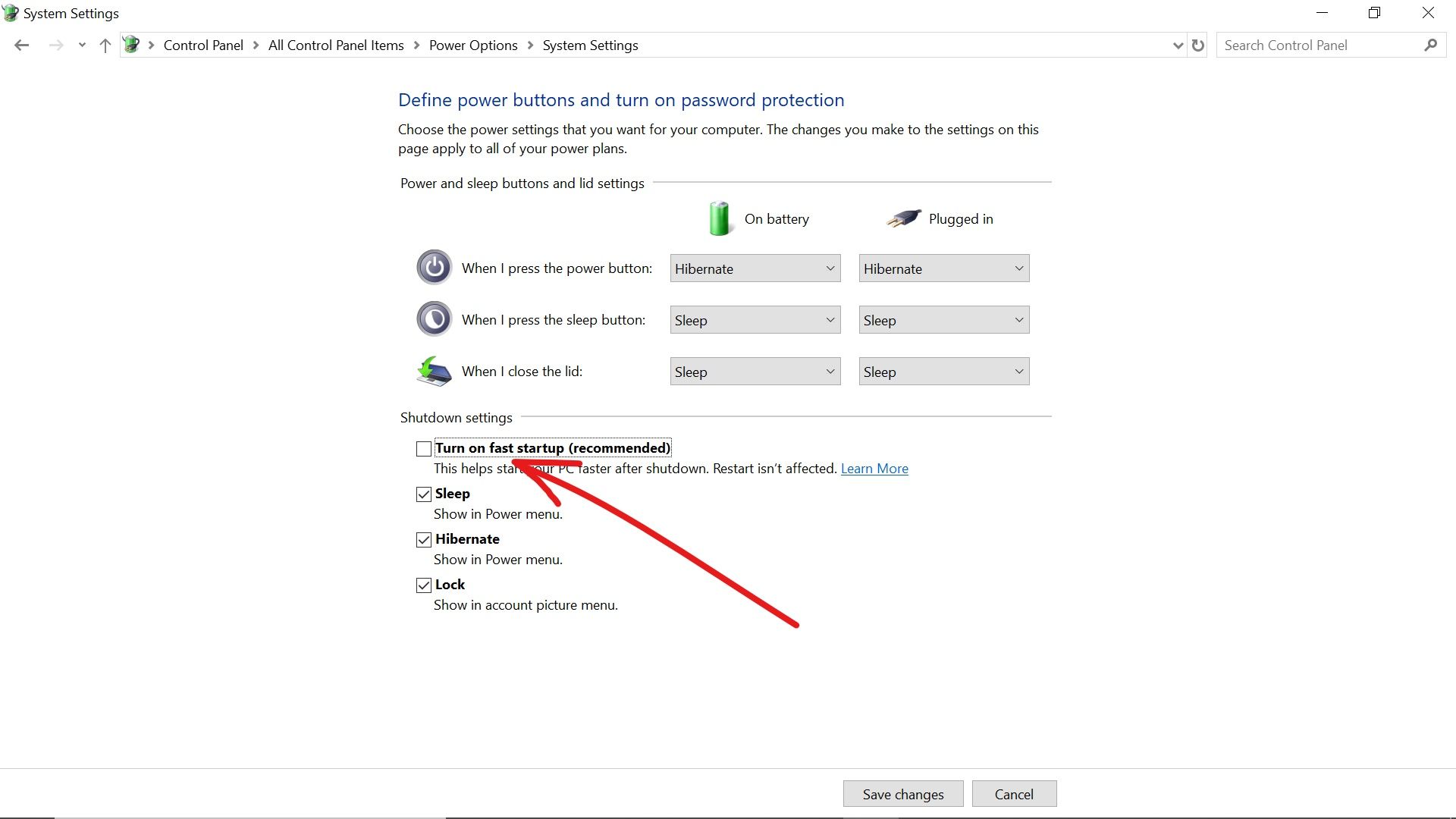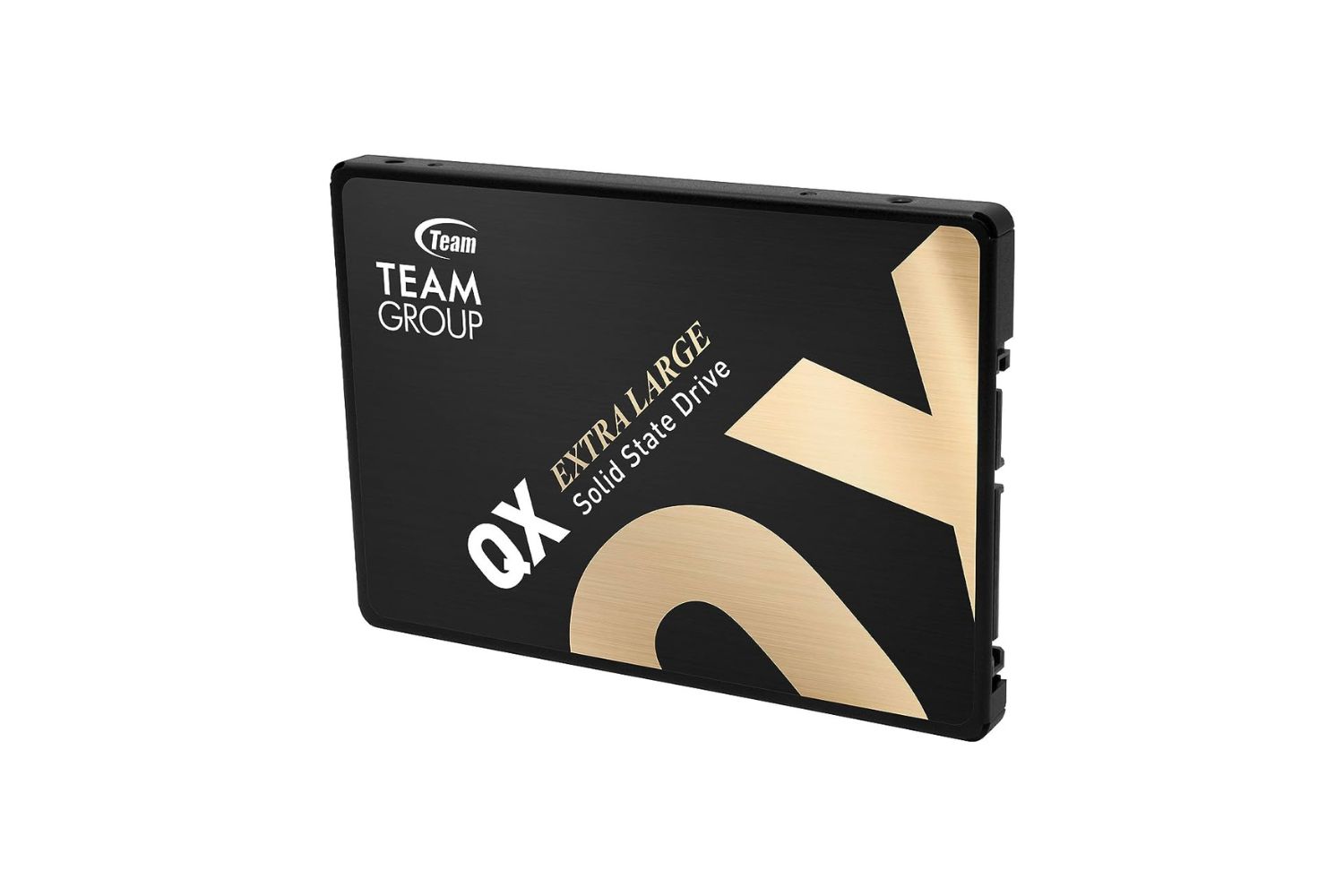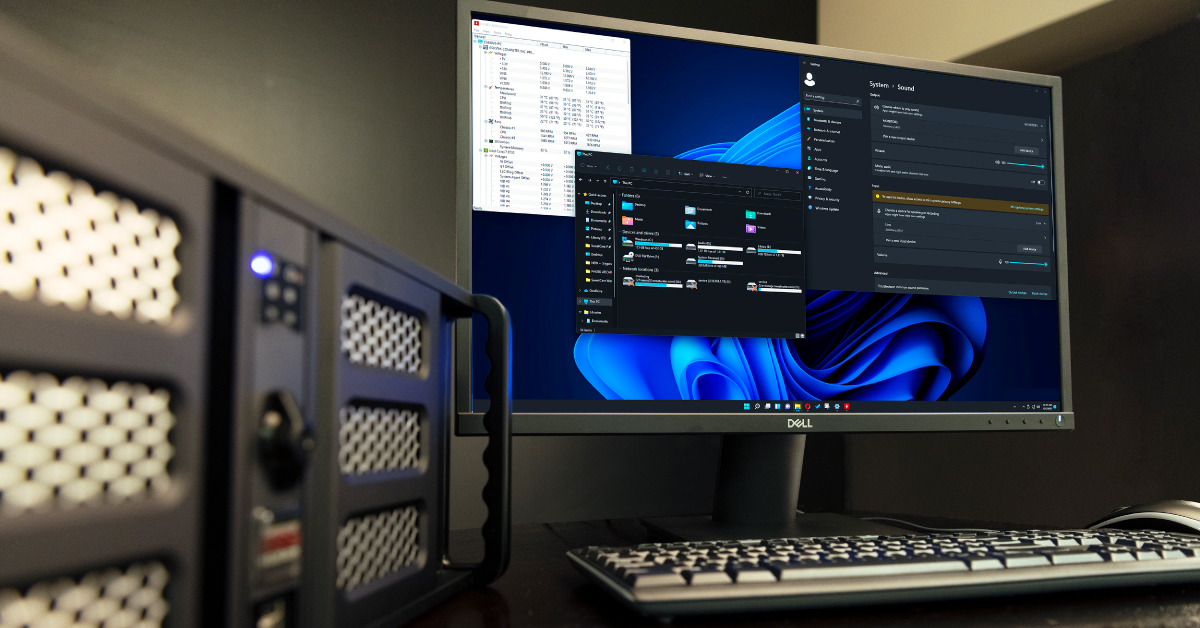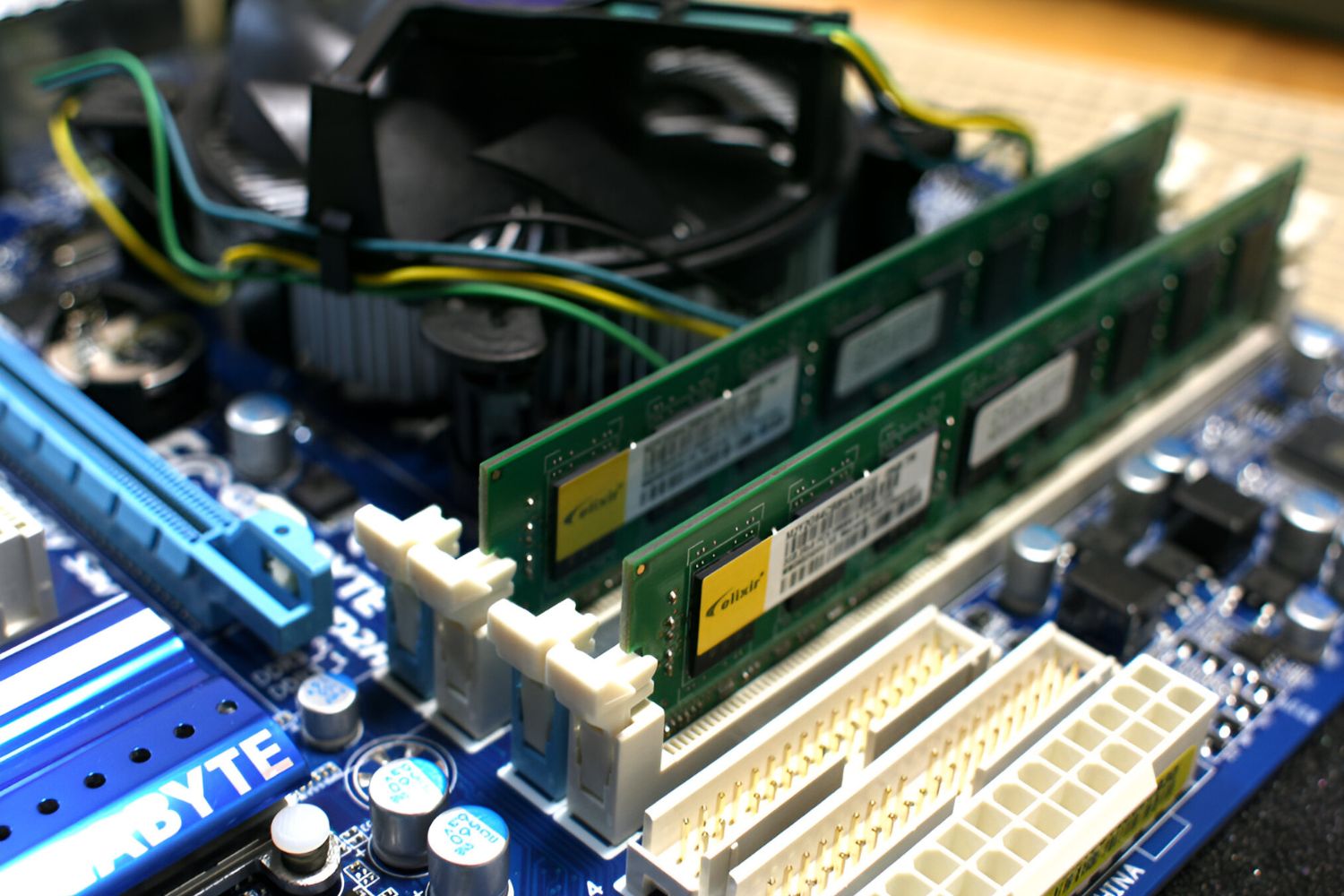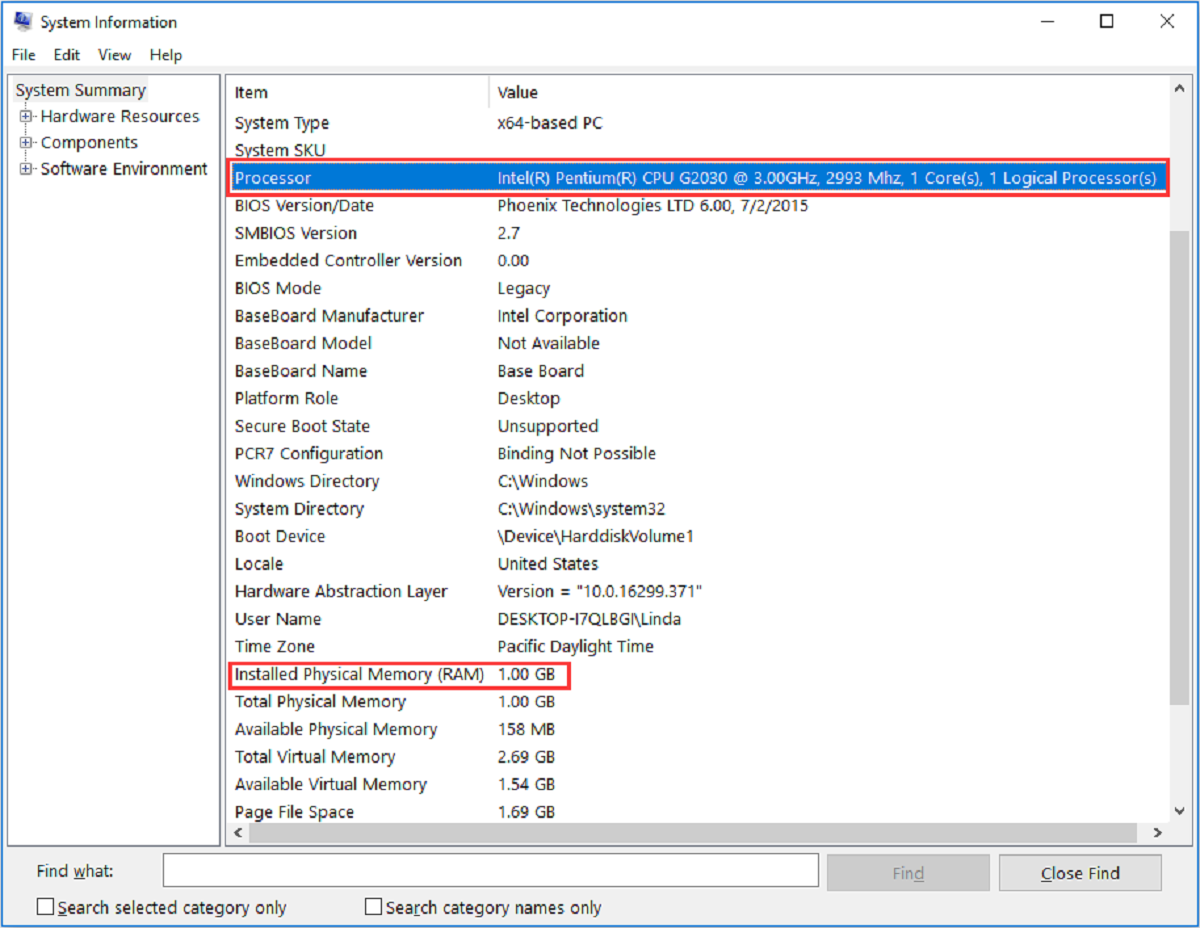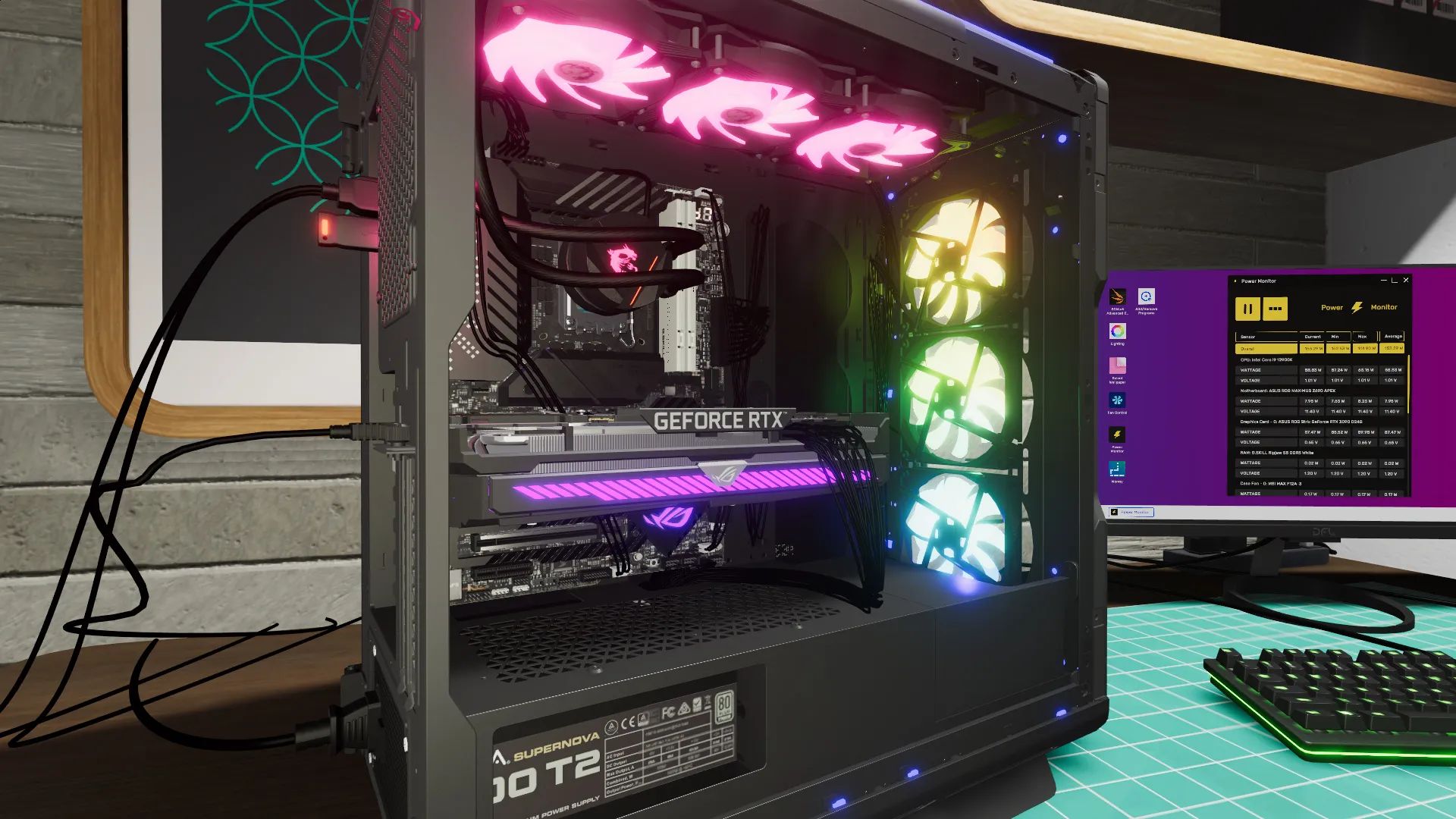Introduction
Welcome to the world of computer memory! When we talk about the performance and speed of a computer, one of the key factors that come into play is the amount and quality of the system’s Random Access Memory (RAM). RAM is a crucial component that enables a computer to quickly access and retrieve data, allowing for smooth and efficient operations.
However, there are instances where the available physical RAM may not be sufficient to handle all the tasks and processes running on the system. This limitation can result in slower performance and an overall decrease in productivity. To address this issue, PCs have a clever solution – they use the hard drive as an extension of the system RAM.
In this article, we will explore the concept of extending system RAM using the hard drive and understand the mechanics behind it. We will delve into the fascinating world of virtual memory, paging, page faults, swapping, and more. So let’s dive in and unravel this hidden gem of computer technology!
What is System RAM?
System RAM, also known as Random Access Memory, is a type of computer memory that holds data and instructions that are currently being used by the computer’s operating system and applications. It is a temporary storage space that allows the computer to quickly access data and perform tasks efficiently.
RAM operates at a much faster speed than the computer’s hard drive or solid-state drive (SSD). When you open a program or file, it is loaded into the system RAM so that the processor can quickly access and work with the data. This speedy access is what allows your computer to respond promptly to your commands and perform multiple tasks simultaneously.
System RAM is a crucial component that directly affects the performance of your computer. The more RAM your system has, the better it can handle demanding applications and multitasking. With sufficient RAM, you can smoothly run resource-intensive programs such as video editing software, games, and virtual machines without experiencing lag or slowdowns.
It’s important to note that system RAM is volatile, which means that its contents are erased when the computer is powered off or restarted. This is why it is often referred to as “temporary memory.” Any files or documents you are working on, as well as the operating system and applications, will be lost if not saved to a non-volatile storage device, such as a hard drive or SSD, before shutting down the computer.
System RAM is measured in gigabytes (GB) and is one of the key specifications to consider when purchasing a new computer or upgrading an existing one. It is typically expandable, allowing users to add more RAM modules to increase the total capacity.
Now that we understand what system RAM is and its significance, let’s explore why PCs use the hard drive as an extension of system RAM and how it works.
Why do PCs Use the Hard Drive as an Extension of System RAM?
PCs use the hard drive as an extension of system RAM to overcome the limitations of physical RAM capacity. While RAM is much faster than the hard drive, it is more expensive and has a limited capacity. By utilizing the hard drive as virtual memory, PCs can effectively increase the available memory for running applications and handling data.
One of the main advantages of using the hard drive as an extension of system RAM is the ability to handle more data and processes. When the available physical RAM is fully utilized, the operating system transfers less frequently used data from RAM to the hard drive. This frees up space in the RAM for more active data and processes, allowing the computer to continue running smoothly without experiencing significant performance degradation.
Another reason for using the hard drive as virtual memory is to provide a larger addressable memory space. Older 32-bit systems, for example, have a maximum limit of 4 GB of physical addressable memory. By utilizing virtual memory on the hard drive, the computer can effectively address more memory, allowing it to handle larger and more memory-intensive applications.
Virtual memory also allows for better multitasking capabilities. When there are several applications running simultaneously, the system RAM may become overloaded, leading to slowdowns or crashes. By using the hard drive as an extension of RAM, the computer can allocate additional memory resources to different applications, ensuring smooth multitasking performance.
Furthermore, utilizing the hard drive as virtual memory helps prevent data loss and system crashes. When a computer runs out of physical RAM, it may be forced to terminate processes or display error messages. By utilizing the hard drive as an extension of RAM, the computer can seamlessly transfer data between the RAM and the hard drive, minimizing the risk of data loss and ensuring system stability.
Although utilizing the hard drive as an extension of system RAM offers numerous benefits, it is important to note that the speed of the hard drive is significantly slower than that of RAM. Therefore, the use of virtual memory may result in decreased performance when compared to running solely on physical RAM. However, this trade-off allows for more efficient memory management and better overall system performance in situations where the available physical RAM is limited.
Now that we understand why PCs use the hard drive as an extension of system RAM, let’s delve into the concept of virtual memory and how it works.
What is Virtual Memory?
Virtual memory is a memory management technique used by operating systems to expand the available memory space beyond the physical RAM installed on a computer. It allows the computer to utilize a portion of the hard drive as an extension of the system RAM, providing additional memory resources to run applications and store data.
In virtual memory, the operating system divides the hard drive into fixed-sized units called “pages” that correspond to the pages in the physical RAM. These pages act as temporary storage for data and instructions that are not currently being actively used but are still required by the running processes.
When an application requests more memory than what is available in the physical RAM, the operating system will intelligently transfer less frequently used pages from the RAM to the hard drive, making room for the new data. This process is called “paging.” It allows the computer to free up space in the RAM and store data that is not immediately needed on the slower, but more abundant, hard drive space.
Virtual memory also utilizes a technique called “page fault” to manage the transfer of data between the RAM and the hard drive. When a process accesses a page of memory that is not currently in the RAM, a page fault occurs. The operating system intelligently fetches the required page from the hard drive and loads it into the RAM. This ensures that the data is readily available for the process to continue execution.
Another aspect of virtual memory is “swapping.” Swapping occurs when the operating system needs to free up additional RAM space by moving an entire process, including all its associated pages, from the RAM to the hard drive. This is typically done when the system is running low on physical RAM due to the simultaneous execution of multiple memory-intensive applications.
By utilizing virtual memory, computers can effectively extend their memory capacity beyond the physical limitations of the installed RAM. This allows for better multitasking abilities, efficient memory management, and the ability to run larger and more memory-intensive applications.
Now that we have a basic understanding of virtual memory, let’s explore the mechanics of how virtual memory works in more detail, including paging, page faults, and swapping.
How does Virtual Memory Work?
Virtual memory is a complex and sophisticated memory management technique that allows computers to effectively utilize the hard drive as an extension of the system RAM. It involves several key components and processes that work together to provide increased memory capacity and efficient memory management.
One of the primary mechanisms of virtual memory is paging. In this process, the computer divides the physical RAM and the hard drive into fixed-sized units called pages. Each page has a unique address and can store a specific amount of data. The operating system keeps track of the pages currently in the RAM and the ones stored on the hard drive.
When an application requests memory, the operating system checks if the required page is already in the physical RAM. If it is, the data can be quickly accessed. However, if the requested page is not in the RAM, a page fault occurs. The operating system then retrieves the required page from the hard drive and loads it into the RAM. This process is transparent to the application and allows for efficient memory utilization.
Virtual memory also involves the concept of swapping. When the computer is running multiple applications or processes simultaneously and runs low on physical RAM, the operating system may need to free up space. In this case, it moves an entire process, including all its associated pages, from the RAM to the hard drive. This process is known as swapping out. The freed-up RAM space can then be used to load new processes or data.
As the system continues to run, the operating system constantly manages the allocation of pages between the physical RAM and the hard drive based on their respective usage. Frequently accessed data and instructions are kept in the RAM to ensure faster access, while less frequently used pages are stored on the hard drive. This dynamic management of pages in virtual memory helps optimize performance and ensures that the most critical data is readily available.
While virtual memory provides numerous benefits, it is important to note that the speed of accessing data from the hard drive is significantly slower compared to accessing data from the RAM. This difference in speed can lead to performance degradation when applications heavily rely on virtual memory. Therefore, it is still essential to have an adequate amount of physical RAM to minimize the reliance on virtual memory and enhance system performance.
Now that we understand the mechanics of how virtual memory works, let’s explore how the hard drive is used as an extension of the system RAM.
Paging
Paging is a crucial component of virtual memory that allows the operating system to efficiently manage the transfer of data between the physical RAM and the hard drive. It involves dividing the memory into fixed-sized units called pages, which are used for storing data and instructions.
When an application or process requires additional memory, the operating system assigns a set of contiguous pages in the physical RAM to accommodate the data. These pages are mapped to a specific address range in the virtual memory space. This mapping allows the application to access the data using virtual addresses, unaware of whether the pages are currently in the RAM or stored on the hard drive.
Virtual memory employs a paging algorithm to determine which pages should be loaded into the physical RAM and which pages should be stored on the hard drive. The goal of the paging algorithm is to optimize memory usage and minimize the need for frequent access to the slow hard drive.
When a page is needed for execution and it is not present in the RAM, a page fault occurs. The operating system then retrieves the required page from the hard drive, bringing it into the RAM for immediate access. This process of transferring pages between RAM and the hard drive is known as page swapping.
Paging algorithms, such as the least recently used (LRU) algorithm, are used to determine which pages should be swapped out to make room for new pages in the RAM. The LRU algorithm, for example, identifies the least recently used page and replaces it with the new page that is required by the application. This way, the most recently accessed pages are kept in the RAM for faster access, improving overall system performance.
By utilizing paging, the operating system can effectively manage the allocation of memory and ensure efficient use of the available resources. Paging allows for the seamless transfer of data between the RAM and the hard drive, providing the illusion of a larger memory space and enabling computers to handle more demanding applications and multitasking scenarios.
However, it is important to note that excessive paging, where a significant amount of data is constantly being swapped between RAM and the hard drive, can result in performance degradation. This is because the speed of accessing data from the hard drive is much slower compared to accessing data from the RAM. Therefore, maintaining an optimal balance between the physical RAM and virtual memory is crucial for achieving optimal system performance.
Now that we have explored the concept of paging, let’s delve into the occurrence of page faults and how they are managed by the operating system.
Page Faults
In the realm of virtual memory, a page fault refers to the situation when a process requests access to a page of memory that is not currently resident in the physical RAM. This occurs when the page needed by the process has been swapped out to the hard drive due to memory constraints or is being accessed for the first time since the process started.
When a page fault occurs, the operating system intervenes and initiates a sequence of actions to handle the situation. The first step is to identify the location of the required page on the hard drive. The operating system then retrieves the page from the hard drive, bringing it back into the physical RAM for immediate use by the process. Once the page is resident in the RAM, the process can continue its execution seamlessly.
During a page fault, the processor interrupts the execution of the process, suspending its operation temporarily. This interruption may introduce some delay, known as the page fault handling time, as the operating system performs the necessary tasks to resolve the page fault. However, the overall impact on system performance is usually minimal, especially when page faults are infrequent.
Page faults can be classified into two main types: major faults and minor faults. Major page faults occur when the requested page is not present in the RAM at all and needs to be loaded from the hard drive. On the other hand, minor page faults happen when the requested page is present in the RAM but marked as “invalid” or “nonresident,” requiring a simple update of the page table to make it accessible again.
The occurrence of page faults is a naturally expected behavior in virtual memory systems, particularly when the working set of a process exceeds the physical RAM capacity. In fact, a few page faults can actually help optimize memory utilization by keeping the most frequently accessed pages in the RAM and swapping out less frequently used pages to the hard drive.
The management of page faults is handled by the operating system’s memory management unit (MMU). The MMU is responsible for monitoring and handling page faults, ensuring that the required pages are brought into the RAM promptly and transparently to the running processes. Sophisticated algorithms, such as demand paging and pre-fetching, are employed to minimize page faults and reduce the impact on system performance.
Efficiently managing page faults is crucial to maintaining system stability and performance in virtual memory systems. A high degree of page faults could indicate a need for additional physical RAM or adjustments to the page size and swapping policies to better align with the specific requirements of the system and the running processes.
Now that we understand the concept of page faults and how they are handled, let’s explore the process of swapping pages between the RAM and the hard drive, known as swapping.
Swapping
Swapping is a vital mechanism in virtual memory systems that involves moving entire processes or segments of processes between the physical RAM and the hard drive. It is a dynamic process initiated by the operating system when the available physical RAM becomes limited or when processes require more memory than what is currently available.
When the operating system decides to swap a process out to the hard drive, it first saves the process’s entire state, including its execution context, registers, and memory contents, to a designated area on the hard drive. This ensures that when the process is swapped back into the RAM, it can resume execution from the exact point it was suspended.
The physical RAM space previously occupied by the swapped-out process is freed up and made available for other processes that require memory. This allows the operating system to continue running multiple processes simultaneously, even if the total memory demand exceeds the physical RAM capacity.
Swapping occurs dynamically based on the memory demands of the running processes. The operating system utilizes sophisticated algorithms, such as the least recently used (LRU) algorithm or the first-in-first-out (FIFO) algorithm, to determine which processes to swap out when the need arises. These algorithms assess the activity and importance of processes, ensuring that the most critical and frequently accessed processes remain in the RAM for optimal performance.
When a swapped-out process needs to be brought back into the RAM, the operating system restores its saved state from the designated area on the hard drive. This includes reloading the process’s pages into the RAM, setting the appropriate execution context, and resuming execution from the point where it left off. The process can then continue its operation as if it had never been swapped out.
Swapping can occur at the process level, where entire processes are swapped in and out of the RAM, or at a more granular level, where only specific segments or pages of a process are swapped. This flexibility allows the operating system to allocate memory efficiently and prioritize critical processes without sacrificing overall system performance.
While swapping plays a critical role in enabling virtual memory systems to handle more processes and larger memory demands, excessive swapping can have a negative impact on performance. Frequent swapping between the RAM and the hard drive can introduce delays and increase the I/O operations on the hard drive, leading to slower response times and decreased overall system performance. It is therefore important to strike a balance between the available physical RAM and the need for virtual memory to optimize system performance.
Now that we have explored the concept of swapping and how it facilitates the dynamic allocation of memory in virtual memory systems, let’s move on to discussing how the hard drive is used as an extension of the system RAM.
How is the Hard Drive Used as an Extension of System RAM?
In a computer system, the hard drive is used as an extension of system RAM through a technique known as virtual memory. Virtual memory allows the operating system to utilize a portion of the hard drive to supplement the physical RAM, effectively increasing the available memory for running applications and storing data.
When the physical RAM is fully utilized, the operating system intelligently manages the allocation of memory by transferring less frequently used data from the RAM to the hard drive. This process is known as paging. The pages of memory that are moved to the hard drive are stored in a special area called the swap space or pagefile.
When an application requires access to data that is no longer in the RAM, the operating system retrieves the required page from the swap space on the hard drive and loads it back into the RAM. This allows the application to seamlessly access the data as if it were still residing in the physical RAM.
The hard drive, acting as an extension of the system RAM, provides several benefits. It allows a computer to handle more memory-intensive applications and processes, as the virtual memory provided by the hard drive expands the overall memory capacity. This enables multitasking and efficient memory management, enhancing the performance and responsiveness of the system.
However, there is a notable difference in speed between accessing data from the RAM and accessing data from the hard drive. RAM is much faster due to its direct connection to the processor, while the hard drive relies on mechanical read/write operations. Consequently, accessing data from the hard drive is slower, which can impact system performance when there is heavy reliance on virtual memory.
To mitigate the performance impact, the operating system employs various strategies. One common approach is to prioritize the most frequently accessed data in the RAM, keeping it readily available for fast processing. Additionally, optimizing the size of the swap space and the placement of the swap file on the hard drive can also improve performance.
The utilization of the hard drive as an extension of system RAM is transparent to the applications running on the computer. From the application’s perspective, the virtual memory on the hard drive appears as an extension of the physical RAM, allowing them to continue operating as if there were ample memory available.
It is worth mentioning that while using the hard drive as an extension of system RAM offers expanded memory capacity, it is still advisable to have sufficient physical RAM for optimal performance. The speed and responsiveness provided by physical RAM are superior to that of virtual memory on the hard drive.
Now that we understand how the hard drive is used as an extension of system RAM, let’s examine the benefits and drawbacks of this approach.
Benefits and Drawbacks of Using the Hard Drive as an Extension of System RAM
Utilizing the hard drive as an extension of system RAM offers several benefits and drawbacks that impact the performance and functionality of a computer system. Let’s explore the advantages and limitations of this approach:
Benefits:
- Increased Memory Capacity: By using the hard drive as virtual memory, the overall memory capacity of the system is expanded. This allows the computer to handle larger and more memory-intensive applications, improving multitasking capabilities and accommodating a greater number of processes simultaneously.
- Efficient Memory Management: The utilization of virtual memory enables the operating system to effectively manage memory allocation. By moving less frequently used data to the hard drive, the physical RAM is reserved for more actively accessed data and processes, optimizing memory usage and enhancing system performance.
- Cost Efficiency: Physical RAM is more expensive than storage devices such as hard drives. By using the hard drive as an extension of system RAM, computer systems can achieve a balance between cost and performance, as virtual memory can compensate for a portion of the physical RAM capacity.
- Flexibility: Virtual memory is dynamically managed, allowing for the allocation and deallocation of memory resources as needed. It provides a flexible approach to handle varying memory requirements, ensuring that the system can adapt to different workloads and perform efficiently under different conditions.
Drawbacks:
- Slower Performance: Accessing data from the hard drive is significantly slower than accessing data from physical RAM. This speed difference can result in decreased performance, especially when there is heavy reliance on virtual memory. The system may experience increased response times and lag, particularly when actively accessing large amounts of data or running memory-intensive applications.
- Potential for Disk Thrashing: When the available RAM becomes insufficient and the system heavily relies on virtual memory, excessive paging and swapping can occur. This phenomenon, known as disk thrashing, happens when the system spends a significant amount of time continuously swapping pages between the RAM and the hard drive. Disk thrashing leads to a deterioration in system responsiveness as the operating system struggles to keep up with the constant swapping of data.
- Dependency on Hard Drive Health: The health and performance of the hard drive become critical when used as an extension of system RAM. Any issues or failures with the hard drive can directly impact system stability and performance. Regular maintenance and monitoring of the hard drive’s health are essential to ensure reliable operation and prevent data loss or system crashes.
- Limited Speed Boost: While utilizing the hard drive as virtual memory can provide additional memory capacity, it does not improve the overall processing speed of the system. The speed of the processor and other hardware components remains unchanged, and the system’s performance is still ultimately bounded by the hardware limitations.
Despite its drawbacks, using the hard drive as an extension of system RAM is an effective approach to expand memory capacity and optimize system performance when physical RAM is limited. It provides a cost-efficient solution that balances the memory needs of the system with the available resources.
Now that we have explored the benefits and limitations of using the hard drive as an extension of system RAM, let’s conclude our discussion.
Conclusion
Using the hard drive as an extension of system RAM through virtual memory is a crucial technique that allows computers to handle a larger number of processes and memory-intensive applications. This approach provides several benefits, including increased memory capacity, efficient memory management, and cost efficiency.
By utilizing virtual memory, the operating system seamlessly transfers less frequently used data from the RAM to the hard drive, freeing up space in the RAM for more actively accessed data and processes. This dynamic memory management optimizes system performance and enhances multitasking capabilities.
However, it’s important to consider the drawbacks of using the hard drive as an extension of system RAM. The slower access speed of the hard drive compared to physical RAM can lead to decreased performance, particularly when there is heavy reliance on virtual memory. Disk thrashing, dependency on hard drive health, and limited speed boost are also factors to be mindful of.
To mitigate the impact of using virtual memory, it is crucial to have an adequate amount of physical RAM. This helps minimize reliance on the hard drive and ensures optimal system performance. Regular maintenance and monitoring of the hard drive’s health are also essential to prevent data loss and system crashes.
In conclusion, the use of the hard drive as an extension of system RAM is a valuable strategy that expands memory capacity and enhances the efficiency of memory management. It allows computers to handle larger workloads and run memory-intensive applications. While virtual memory is not a replacement for physical RAM in terms of speed and performance, it provides a cost-effective balance between memory requirements and available system resources.







